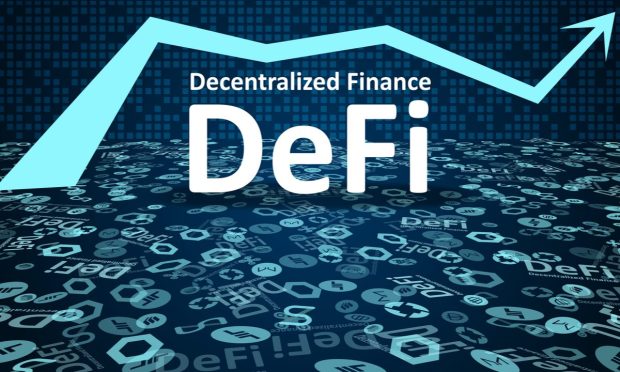Crypto Basics Series: How Does Decentralized Crypto Lending Work?

“Bitcoin,” “blockchain” and “cryptocurrency” are words that most people have at least heard of since the industry exploded into the mainstream public consciousness over the last year and a half.
Over the course of this series of articles, we’ll be delving into the basics of the industry, providing an introduction to crypto that will give you a solid grounding in the technology and its lexicon. (Cryptographers should never be allowed to name anything the public will eventually need to know.)
In short, it will be enough to understand what people are talking about and decide if you want to learn more.
Read more from PYMNTS’ Crypto Basics Series:
What’s a Blockchain and How Does It Work?
What’s a Crypto Wallet and How You Can Avoid Losing a Quarter Billion Dollars?
How to Lose Your Crypto Without Being Hacked
Is Bitcoin Really Anonymous and How Can Law Enforcement Track It?
What’s a Consensus Mechanism and Why Is It Destroying the Planet?
What Is Mining, and Why Doesn’t the Business of Bitcoin Work
What’s a Permissioned Blockchain and How Does Centralized Decentralization Work?
What’s a Satoshi? Bitcoin’s Million-Dollar ‘Penny’
What’s a Native Token, Non-Native Token and White-Label Crypto?
How Does Centralized Crypto Lending Work?
Decentralized crypto lending is a fair bit more complex than its centralized counterpart. But the core mechanism is the same. Lenders lock their cryptocurrency into a lending platform in exchange for interest — often very high interest, or yield, rates. Borrowers access those funds by putting up collateral worth 125% to 150% of the loan, which they get back when they repay the loan with interest.
If the value of the collateral cryptocurrency drops close to the value of the loan, borrowers get a margin call. If they don’t respond in time — and the deadline can be soon if the token in question is falling fast — the collateral is liquidated for the amount borrowed, interest owed and generally a liquidation fee.
As borrowers typically take out these loans to provide liquidity without selling the underlying cryptocurrency, which they believe will continue to rise in value over the long term, this means they’ve paid several fees and had their collateral sold at a substantial loss.
Decentralized finance (DeFi) lending is run wholly by self-executing smart contracts, which has benefits and disadvantages.
For one thing, all borrowers are treated the same. Centralized crypto lenders BlockFi and Voyager Digital lost hundreds of millions of dollars and became insolvent in June and July — the former was purchase for a song and the latter is in bankruptcy — because a big crypto hedge fund, which was given loans without sufficient capital, defaulted.
That can’t happen in DeFi lending, as there’s no centralized management to approve the loans. Everything goes through the same smart contract.
On the other hand, smart contracts don’t have any instincts or ability to spot unpredicted problems. In June, for instance, the Solana blockchain’s Solend DeFi lending platform discovered that a single borrower had such a large position in danger of liquidation that it would crash the token’s value.
DeFi has been clobbered by hackers, who made off with more than $1.6 billion in just the first four months of the year. Much of that came from bridge protocols, a specialized type of DeFi lender focused on facilitating cross-blockchain payments.
See more: The $100M Hack and Crypto’s Cross-Chain Payments Problem
What’s It Good For?
The biggest problem DeFi lending has is that it’s in large part a closed ecosystem that is used “mostly facilitate speculation in crypto assets rather than real economy lending,” the Bank for International Settlements (BIS) pointed out in a June report, “DeFi Lending: Intermediation Without Information?”
The other main issue is that the anonymity it offers borrowers requires overcollateralization — which in turn “limits access to credit to borrowers who are already asset-rich, negating financial inclusion benefits,” the BIS said.
While there are some efforts to change that — a number of companies are trying to create crypto credit scores that could be provided to DeFi projects to enable low- or uncollateralized lending — so far they are in their infancy.
See here: Masa Finance Founder Believes Crypto Credit Scores Are DeFi’s Great Equalizer
Making It Work
DeFi lending platforms work by forming liquidity pools into which lenders can lock crypto assets. There is often a waiting period before they can be withdrawn. These pools are one of the ways DeFi lending allows investors to take on more risk for more reward. Different pools accept different assets, offer different interest rates and set other terms so as to be more competitive and attract more borrowers or charge them higher rates to increase earnings.
Generally, smart contracts control the rate the liquidity pools pay lenders locking in cryptocurrency, so if liquidity is low, it will offer a higher rate to attract more lenders.
There are several other complexities, such as impermanent loss — frightening paper losses on the crypto locked into a liquidity pool as the value of the crypto locked changes — that make staking in DeFi lending platforms a lot more complex than simply depositing funds to earn interest.
Another is that some liquidity pools pay rewards in the platform’s native tokens as well as the crypto deposited, so there are ways of earning besides simply yield.
Also read: DeFi Series: What is Yield Farming and Liquidity Mining?
Which is to say, while crypto lending can sound much like a savings account — deposit funds, get interest — it isn’t necessarily the best choice for someone who does not know crypto and how it works. Crypto lending can offer sky-high yield rates. There’s a reason for that.
For all PYMNTS crypto coverage, subscribe to the daily Crypto Newsletter.
